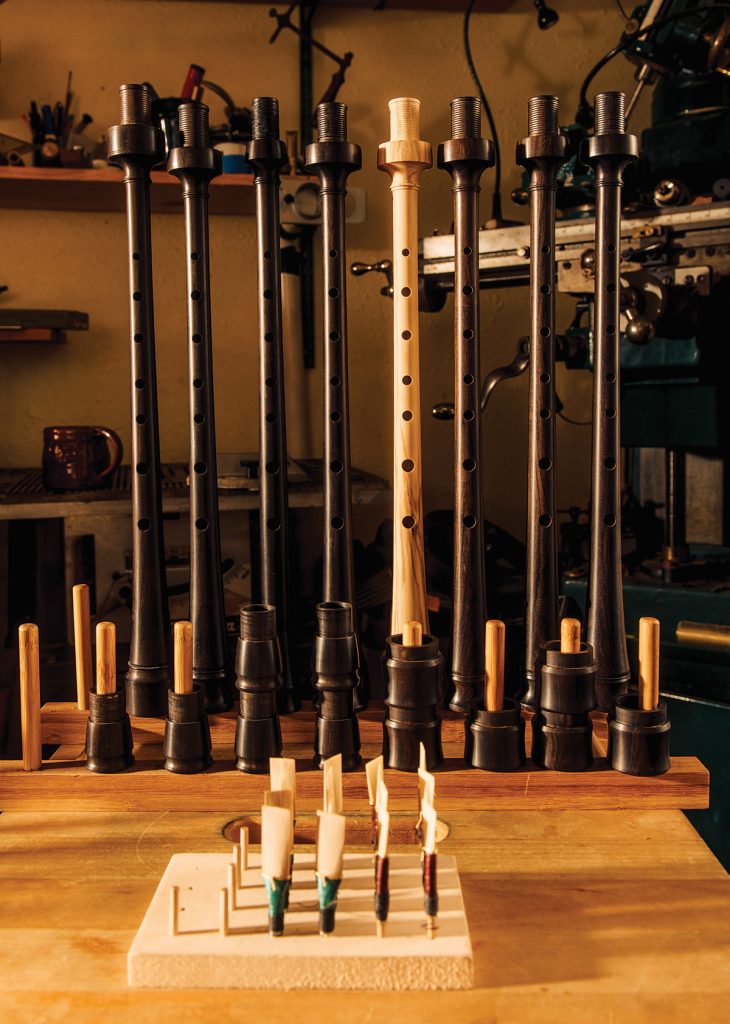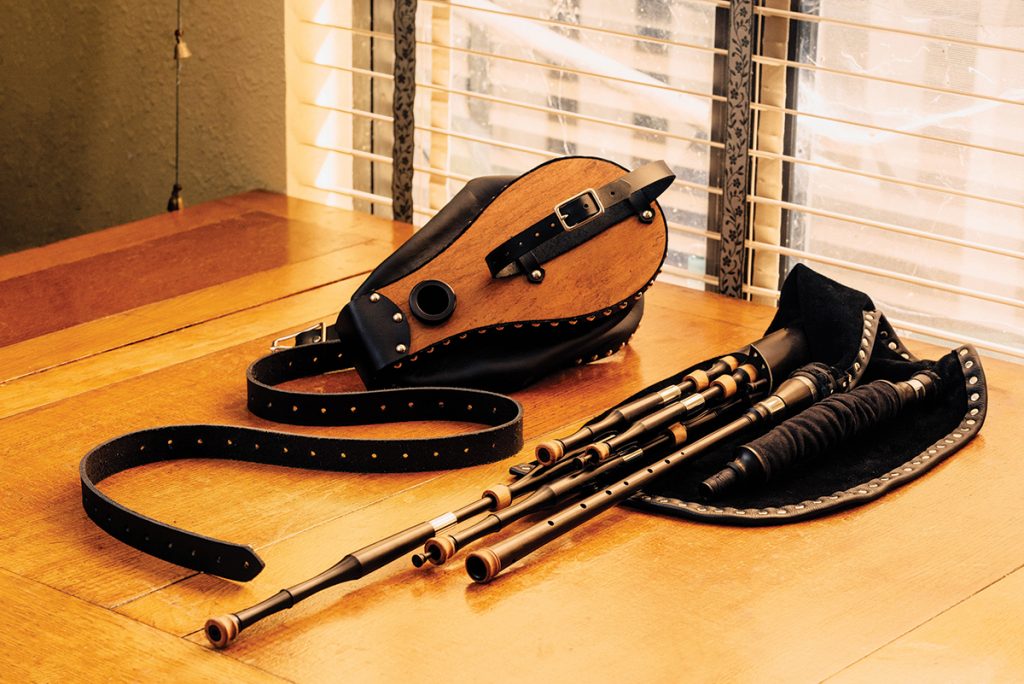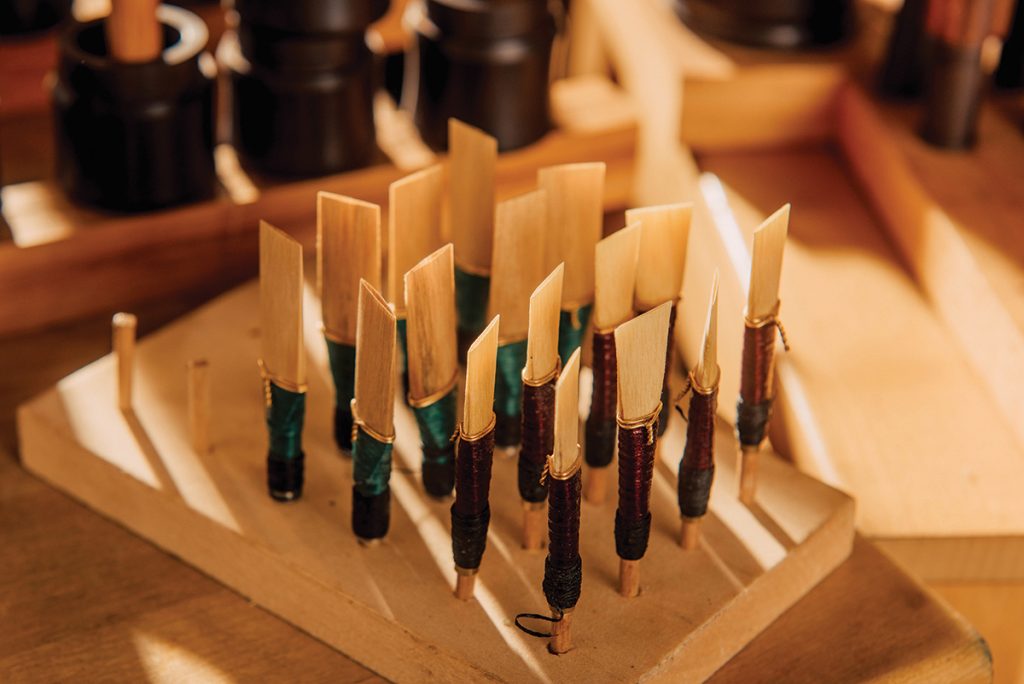
EJ Jones crafts bagpipes for players around the world.
Portrait by Clark Hodgin
It was the 1980s, an era before Outlander made kilts sexy again, when most people associated bagpipes with traditional weddings and funerals — when the closest popular culture came to the instrument was a solo in a Big Country song.
But one curious 11-year-old, EJ Jones, followed a friend into a local bagpipe-playing program in Houston, Texas. And by the time he was a teenager, he was a devotee.

In the years following, traditional Celtic music rose in public consciousness thanks to the movies Braveheart and Rob Roy, their release coinciding with EJ’s first bands. By the time Titanic hit the theaters two years later, Jones’ group Clandestine was playing festivals with Gaelic Storm, featured prominently on the soundtrack. A few years later, a gig at Jack of the Wood brought Jones to Asheville, where he fell in love with both a girl and with the place. The girl, he notes, is still one of his best friends; the place is home.
More than two decades later, Jones continues to release new music and tour with his Piper Jones band. He also expanded his pipe knowledge into actually making custom smallpipes, and by 2003, was crafting sets for Celtic-music aficionados around the world.

Photo by Clark Hodgin
Smallpipes are indeed smaller in size, but as Jones points out, not smaller in sound. “Bagpipes are loud,” he points out, somewhat unnecessarily. “They are great for playing dance parties, weddings, and festivals. The sound can fill a whole town square. It’s a happy sound, intended to be heard throughout a village. But if you, say, want to practice at home, you might want something a little smaller.”
Essentially, bagpipes are lathe-turned instruments, carved from a wide variety of woods. “You’ve got to source the wood,” says Jones, “but the wood is not as important as the reed. The reed is the singer in the room; the rest of the bagpipe is the room where the singer is singing.”

Jones makes his own reeds from Mediterranean grasses. “Reeds are like wine,” he says. “You have good years and good regions.”
Bagpipes come from all over the world — Asia, Northern Africa, the Middle East — but the model most people in the U.S. recognize are the Highland Pipes, native to Scotland. “They started to become standardized about a hundred years ago, and today are like what a Fender Stratocaster is to guitars. You always know it when you see it.”

And you always know it when you hear it. But Jones offers some intriguing historic context: “The British military used bagpipes as a recruitment tool in the Scottish Highlands,” he says. “They would advertise for talented young pipers and enlist them to play and fight … they were able to satisfy two goals: grow their army and manage the troublemakers by sending them halfway across the globe. That’s how the Highland bagpipe became the sound of the British Empire.”
Jones’ smallpipe-making community is a bit smaller than the Empire in its heyday, but quite friendly. He describes it as a good village. “The piping and intra-Celtic instrument community is always open to learning new things and sharing what we’ve learned.”
In non-Covid-affected years, they hold teaching workshops, although “it’s not a huge commercial market,” admits Jones. “Among other things, smallpipe commissions are expensive, and can take months to complete.”
But this suits the maker, who takes commissions while still playing live and booking music for the annual Grandfather Mountain Highland Games.
“I’m not competitive,” he says. “I think I’ve always held to a romantic notion of a small cottage, where I can live a decent life doing work I enjoy. That is enough for me.”
EJ Jones, Asheville. For more information, see piperjones.com.
I always enjoy you and your band at the Highland Games at Grandfather Mountain every year. Y’all put on a great show and you play with such happy emotion.